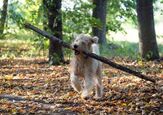Canine dental disease, ranging from gingivitis to advanced periodontal disease, is sadly common, affecting a large number of adult dogs. It’s a silent threat, often progressing beneath the gum line with no obvious signs until it becomes painful and seriously impacts overall health. In the most severe cases, it can lead to issues in the heart, kidneys, and liver.While veterinarians agree that daily tooth brushing is the gold standard for preventing plaque and tartar buildup, for some dogs, that feels more like a wrestling match than a bonding experience. If the idea of daily brushing feels overwhelming or impossible for your dog, you may be searching for other options, including the use of dental water additives.This post will explore how these dental products work, their potential benefits and limitations, and what you should look for when considering one for your dog. By the end, you’ll better understand if a water additive can truly help your dog and if it fits into your greater dental care plan.Why Dental Health is ImportantWhile that unpleasant “dog breath” may be your first clue that something’s wrong, halitosis (bad breath) is often just the tip of the iceberg when it comes to dental problems in our dogs. The real concern is usually progressing beneath the surface.It all begins with plaque, a sticky, colorless film that forms on your dog’s teeth and is composed of bacteria, food particles, and saliva. If it isn’t removed, this plaque hardens into tartar. This rough, porous surface provides the ideal environment for bacteria to build up both above and, more concerningly, below the gum line.This buildup leads to gingivitis, an inflammation of the gums that manifests as redness, swelling, and bleeding. At this early stage, gingivitis is reversible with proper dental care. However, if it’s left untreated, it can progress to periodontal disease, a far more serious condition. Periodontal disease involves the infection and inflammation of the structures that support your dog’s teeth, including the gums, ligaments, and bone. As the infection gets worse, it can lead to irreversible bone loss, gum recession, and ultimately, painful tooth loss. The impact of poor dental health can also progress beyond just the mouth. The bacteria thriving in an infected mouth don’t stay put; they can enter the bloodstream through inflamed gums and travel throughout the body. This can contribute to serious health issues in vital organs like the heart, kidneys, and liver.Plus, we must remember that dental disease is incredibly painful for our dogs and life-changing in terms of their overall quality of life. While they often hide their discomfort, dental pain can impact their ability to eat, chew toys, play, and generally enjoy their lives.This is why vets often emphasize that a healthy mouth is essential for a healthy body.The Gold Standard: Why Brushing Your Dog’s Teeth is Still RecommendedWhen it comes to your dog’s dental care, daily tooth brushing stands as the undisputed gold standard. It physically disrupts and removes the sticky plaque and food debris from the tooth surfaces and, most importantly, along the gum line, before the plaque has a chance to harden into tartar. The active scrubbing of brushing is what makes it the most effective solution. If you’re interested in brushing your dog’s teeth, there are a few things you can do to make the process smoother. Always introduce the toothbrush and toothpaste gradually, focusing on short, positive experiences at first. Make sure you use a toothpaste specifically made for pets, as human toothpaste contains ingredients like xylitol and fluoride that are toxic to dogs. Focus your brushing efforts on the outside surfaces of the teeth, paying close attention to where the tooth meets the gum line, as this is where plaque tends to build up quickest. Consistency and making tooth brushing a positive, reward-based routine are key to success. However, we must also face the reality that this isn’t going to work for every dog. Many dogs aren’t comfortable with having their mouths handled this way, leading to resistance, stress, or even fear. Regular, consistent brushing can also be a challenge for pet parents with time constraints in their busy schedules or those who lack the confidence and knowledge necessary to brush effectively. If daily brushing isn’t feasible for your dog, it doesn’t mean you have to compromise on their dental health. Instead, create a plan with other practical tools to prioritize their dental health and prevent the progression of painful oral diseases. Enter Water AdditivesGiven the challenges many pet parents face with daily brushing, an alternative that has been gaining popularity is the use of dental care water additives. Simply put, these are liquid solutions designed to be added directly to your dog’s drinking water, passively improving their oral hygiene with each drink. How They WorkThe active ingredients in the additive target oral bacteria, preventing plaque formation and helping to break down existing plaque before it hardens into tartar. This includes: Antimicrobial agents like chlorhexidine, zinc salts, or cetylpyridinium. These compounds help stop the growth of bacteria in the mouth, reducing the overall amount of bacteria contributing to plaque formation and bad breath. Enzymes such as glucose oxidase and lactoperoxidase function by breaking down components of plaque or creating an unfavorable environment for bacteria to live and grow. Plaque-loosening agents like citric acid or specific plant extracts are thought to help prevent plaque from adhering to the tooth's surface and soften existing plaque, making it easier to remove through activities like chewing. Some products are made to be tasteless, promising your dog won’t even notice the product has been added to the water. Others add a mild flavoring to make it more tempting for dogs, encouraging them to drink more, adding another benefit to their use.

























